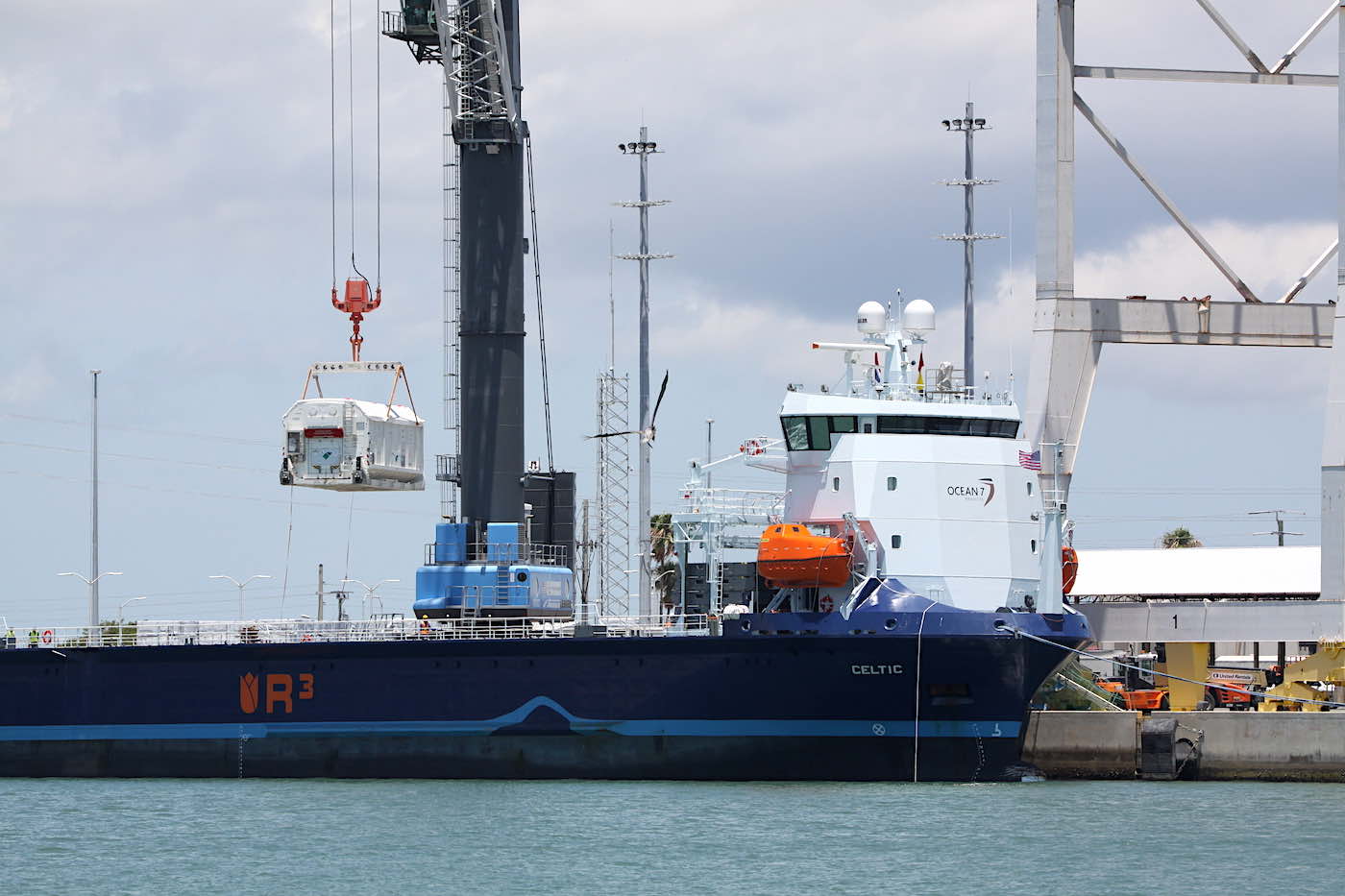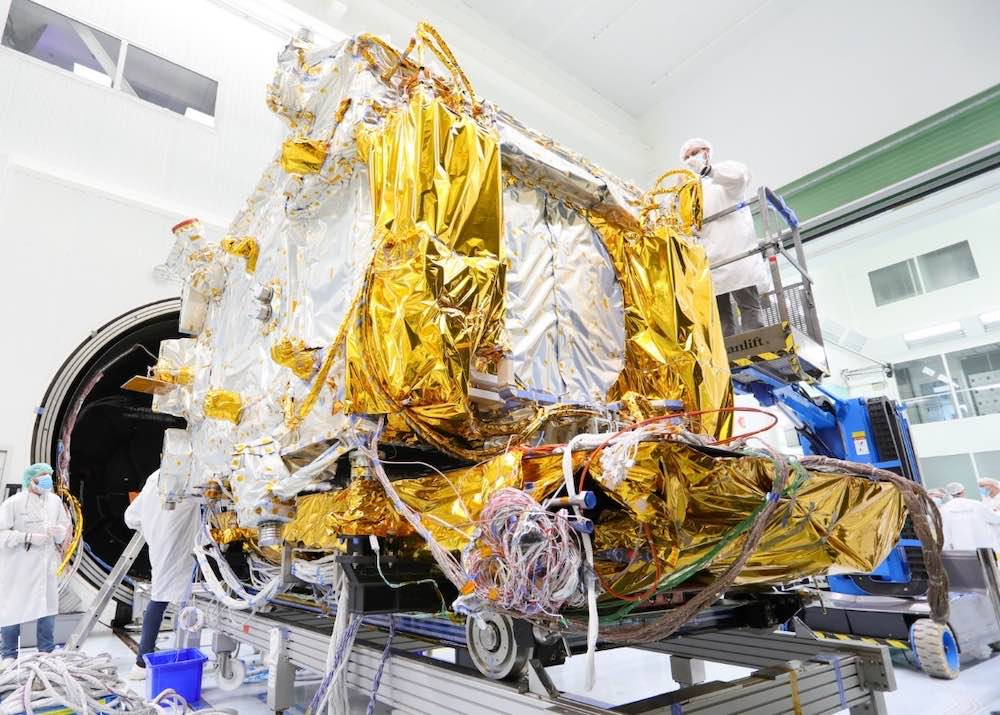Space News & Blog Articles
Geostationary comsats delivered to Florida for SpaceX launches in June
 A spacecraft container is unloaded from a transport ship Saturday at Port Canaveral, Florida. Credit: Stephen Clark / Spaceflight Now
A spacecraft container is unloaded from a transport ship Saturday at Port Canaveral, Florida. Credit: Stephen Clark / Spaceflight Now
A transport ship delivered the SES 22 and Nilesat 301 geostationary communications satellites to Cape Canaveral over the weekend to prepare for two launches on SpaceX rockets in June, completing a trans-Atlantic journey from France originally planned on Russian-owned cargo planes.
The satellites will be prepared for launches on two Falcon 9 rockets next month. Nilesat 301 is scheduled for liftoff June 10 from pad 40 at Cape Canaveral Space Force Station, and SES 22 is set for launch in late June.
Thales Alenia Space, which assembled the satellites in Cannes, France, originally planned to deliver the Nilesat 301 and SES 22 spacecraft to Cape Canaveral on Russian-owned Antonov An-124 cargo aircraft. The An-124 airplanes operated by Russian-based Volga-Dnepr Airlines have been used for decades across the space industry to haul heavy satellites from their factories to their launch sites.
But Russian-owned aircraft have been banned from U.S. and European Union airspace in the wake of Russia’s military attack on Ukraine. That forced satellite companies to find a backup plan for transporting their spacecraft.
Nilesat 301 was ready to leave its factory in France at the end of March for a scheduled launch on a Falcon 9 rocket at the end of April. The launch was delayed to allow time for Thales to secure another means of transportation for the satellite.
Officials settled on transporting Nilesat 301 by ship. SES 22, also built by Thales, traveled from France to Florida on the same vessel. The ship carrying Nilesat 301 and SES 22 left a port near Marseille, France, in late April and arrived at Port Canaveral on Saturday.
Teams unloaded the containers holding the satellites to be trucked inside Cape Canaveral Space Force Station for launch preparations. Engineers will test each satellite to confirm they remain healthy after arriving from France, then load maneuvering propellants into the spacecraft. Finally, the satellites will be encapsulated inside the payload shrouds of their Falcon 9 rockets.
 The SES 22 communications satellite undergoing tests at Thales Alenia Space in France. Credit: Thales Alenia Space
The SES 22 communications satellite undergoing tests at Thales Alenia Space in France. Credit: Thales Alenia Space
The launch schedule for SES 22 was not impacted by the change in transport plans, according to a spokesperson for SES, the Luxembourg company that owns the satellite.
Nilesat 301 will provide digital broadband and internet connectivity services for the Egyptian operator Nilesat. SES 22 will provide C-band television and data services in the United States. The satellites will weigh about 3.5 to 4 metric tons once fully fueled for liftoff.
The Nilesat 301 and SES 22 communications satellites will operate in geostationary orbit more than 22,000 miles (nearly 36,000 kilometers) over the equator.
SpaceX will launch each satellite into an elongated, oval-shaped transfer orbit, then the spacecraft will use on-board propulsion to reach their final operating positions.
This email address is being protected from spambots. You need JavaScript enabled to view it. the author.
Follow Stephen Clark on Twitter: @StephenClark1.
When you subscribe to the SpaceZE News Feed, we will send you an e-mail when there are new updates on the site so you wouldn't miss them.

